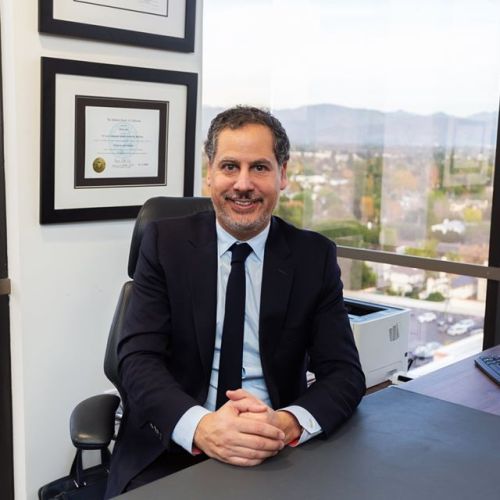Reproductive Options for Gay Couples and Single Men

In the past, same-sex male couples and single men who didn’t have children through prior heterosexual relationships had just two basic paths to parenthood: Conventional adoption or the creation of a non-traditional co-parenting arrangement with a lesbian couple or a single woman.
Today, the ongoing advancement and increasing availability of assisted reproductive technologies (ART) make it possible for gay couples and single men to have biological children of their own, using many of the same cutting-edge techniques that have helped infertile heterosexual couples become parents for decades.
Although the journey to biological parenthood for non-traditional families involves medical and legal challenges, these obstacles can be overcome with the right expertise and guidance.
Here at California Center for Reproductive Health, we’re dedicated to helping all aspiring parents — including single adults and members of the LGBTQ community — find the fertility solution that helps them fulfill their family dreams. If you’re a single man or part of a same-sex male couple, ART can help you build your family on your own terms. Here’s how.
ART and non-traditional family building
The desire to have biological children isn’t unique to the traditional nuclear family. Many single adults are ready to become parents on their own, just as countless same-sex couples want to have children who are biologically related to one or both partners.
For single men and gay male couples, assisted fertility typically involves combining their own sperm with donor eggs and enlisting either a traditional surrogate or a gestational surrogate to carry the pregnancy to term.
Traditional surrogacy
A traditional surrogate is a woman who agrees to be both the egg donor and the gestational carrier for someone else’s baby. For single men as well as same-sex male couples, this relatively simple option is generally the most straightforward and cost-effective way to bring a child into the world, as it can usually be accomplished through basic fertility techniques.
When a traditional surrogate has a good supply of viable eggs, ovulates normally, and has a healthy uterus, artificial insemination, also known as intrauterine insemination (IUI), is often all it takes to achieve a healthy pregnancy.
During IUI, a highly concentrated solution of viable, washed sperm, either from a single donor or a mix of two donors, is injected directly into the uterus during ovulation. If basic IUI techniques fail to result in pregnancy after a few natural cycles, the surrogate may be given fertility medications to stimulate egg production and promote optimal ovulation.
It’s important to keep in mind that even though a traditional surrogate has a genetic connection to the child she’s carrying, she must legally concede all parental and custodial rights to the intended parent or parents before the treatment cycle begins.
It’s also important to note that California is surrogacy-friendly state, meaning it supports the legal rights of all intended parents, regardless of their marital status or sexual orientation, both prior to and after the birth of their child or children.
Gestational surrogacy
A gestational surrogate also carries a pregnancy to term for another individual or couple, but unlike a traditional surrogate, she isn’t the egg donor and has no genetic link to the baby.
Gestational surrogacy is accomplished via in-vitro fertilization (IVF) using either a single man’s sperm or a mix of sperm provided by each partner in a same-sex couple, to fertilize a donor egg for implantation in the womb.
During an IVF procedure, donor eggs are fertilized in a carefully controlled environment and placed in specialized incubators that support optimal development. Once the fertilized eggs become viable pre-embryos, they’re transferred to the surrogate’s uterus for implantation.
Whether donor eggs come from a family member, a close friend, or are sourced anonymously from an egg bank, all donors are required to undergo a thorough medical evaluation and psychological exam, an FDA-mandated infectious disease screening, and a complete genetic disease assessment.
The gestational carrier — who likewise may be a family member, close friend, or professional paid surrogate — must also undergo a complete medical evaluation and consent to receive ongoing prenatal care and any necessary medical treatment throughout her pregnancy.
Expert guidance and impartial support
Understanding your fertility options is just the first step on the road to parenthood. Once you know what your choices are, you’ll have to undertake the often-formidable process of deciding which path is best for you and your family.
At California Center for Reproductive Health, we take pride in providing expert guidance and impartial support for non-traditional families from all walks of life — whether you’re having trouble choosing an egg donor, finding a gestational carrier, or navigating the associated legal hurdles of using a traditional surrogate, we can help.
To learn more, call today or schedule an appointment online at one of our conveniently located Los Angeles area clinics in Encino, West Hollywood, Santa Monica, Alhambra, or Valencia, California.
Eliran Mor, MD
Reproductive Endocrinologist located in Encino, Valencia & West Hollywood, CA
FAQ
What does a reproductive endocrinologist and infertility specialist do?
Reproductive endocrinology and Infertility is a sub-specialty of Obstetrics and Gynecology. In addition to managing medical and surgical treatment of disorders of the female reproductive tract, reproductive endocrinologist and infertility (REI) specialists undergo additional years of training to provide fertility treatments using assisted reproductive technology (ART) such as in vitro fertilization.
Reproductive endocrinologists receive board certification by the American Board of Obstetrics and Gynecology in both Obstetrics and Gynecology and Reproductive Endocrinology and Infertility.
When should I see an REI specialist?
In general, patients should consider consulting with an REI specialist after one year of trying unsuccessfully to achieve pregnancy. The chance of conceiving every month is around 20%, therefore after a full year of trying approximately 15% of couples will still not have achieved a pregnancy.
However, if a woman is over the age of 35 it would be reasonable to see a fertility specialist earlier, typically after 6 months of trying.
Other candidates to seek earlier treatment are women who have irregular menses, endometriosis, fibroids, polycystic ovary syndrome (PCOS), women who have had 2 or more miscarriages, or problems with the fallopian tubes (prior ectopic pregnancy).
What are the reasons we are having trouble conceiving?
Approximately 1/3 of the time cause for infertility is a female factor, 1/3 of the time a male factor, and the remaining 1/3 a couples’ factor.
At CCRH, we emphasize the importance of establishing a correct diagnosis. Both partners undergo a comprehensive evaluation including a medical history and physical exam.
Furthremore, the woman’s ovarian reserve is assessed with a pelvic ultrasound and a hormonal profile. A hysterosalpingogram (HSG) will confirm fallopian tube patency and the uterine cavity is free of intracavitary lesions. A semen analysis is also obtained to evaluate for concentration, motility, and morphology of the sperm.
Additional work up is then individualized to direct the best possible treatment option for each couple.
What is IVF? What is the process like?
In vitro fertilization (IVF) is the process that involves fertilization of an egg outside of a woman’s body.
The process starts with fertility drugs prescribed to help stimulate egg development. In your natural cycle, your body is only able to grow one dominant egg, but with stimulation medication we can recruit multiple eggs to continue to grow. After about 8-10 days of stimulation, the eggs are surgically retrieved and then fertilized with sperm in a specialized laboratory. Fertilized eggs are then cultured under a strictly controlled environment within specialized incubators in the IVF laboratory for 3-5 days while they develop as embryos. Finally, embryos (or an embryo) are transferred into the uterine cavity for implantation.
Should I have IVF?
Before deciding if IVF is the right choice, it’s important to sit down with an REI specialist to discuss available treatment options. For some people, other methods such as fertility drugs, intrauterine insemination (IUI) may be the best first choice treatment. At CCRH, we believe each individual couple is unique and not everyone needs IVF.
Is the IVF procedure painful?
While not painful, the fertility medications may some side effects including headaches, hot flashes, mood swings, and bloating. The injection sites may also bruise.
Will IVF guarantee a baby?
Unfortunately, no. Many people think once they start IVF it’s a matter of time that they will be pregnant and have a baby. But according to national statistics per the Society of Assisted Reproduction (SART), on average 40% of assisted reproduction cycles achieve live births in women under age 35. The chances of success then continue to decrease with advancing age.
At CCRH, we employ only evidence-based interventions to ensure patient safety and optimal outcome. While we cannot guarantee a baby, we guarantee that you will receive the best, most advanced, personalized care to help you maximize your chance of a baby.
What is the success rate for IVF?
The average IVF success rate (success measured in live birth rate) using one’s own eggs begins to drop around age 35 and then rapidly after age 40. This is due to the decline in egg quantity and egg quality as a woman ages.
Our clinic’s success rate consistently beats the national average year after year.
Do insurance plans cover infertility treatment? How much does IVF cost?
Individual insurance plans often do not have any coverage for infertility treatments. If you have a group plan, you can call members services to see if they have coverage for infertility (including consultation/workup and IVF).
After your consultation with our REI specialist, one of our dedicated account managers with sit with you to go over the cost of treatment.




